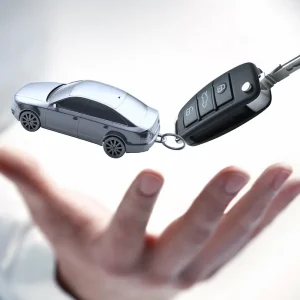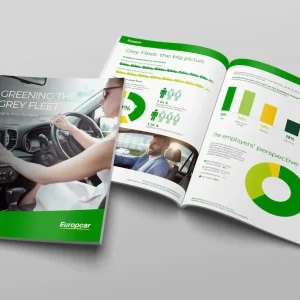
Alloy wheels, an upgraded sound system, a panoramic roof – you can see and touch all of them. There is a palpable distinction between a car that has them and one that does not, which is easily observed and marketed at every stage.
Not all specification is created equal in the eyes of a used car buyer, though. A piece of equipment can be as clever or as expensive as you like, but it is incredibly difficult to put a monetary value on something invisible.
Advanced driver assistance systems (ADAS), such as automatic emergency braking and lane-keep assist, have long had this problem but it is even more acute with over-the-air updates. Often instigated via apps, they could be anything from connectivity upgrades, to safety features, to autonomous driving functions (we are excluding rudimentary software updates), are applied long after the car has left the factory, and could be a one-off purchase or a subscription. The manufacturer may record them, but there is no established method by which the remarketing industry can keep track.
It is arguably easier to market any item of equipment – even the invisible stuff – when a car is new. Brochures and online configurators can be tailored to draw attention to and explain particular features, while sales staff dedicated to a single brand – or small number of them – can be trained.
A certain amount of that trickles into the used car market when vehicles are still in the main dealer network and sold by those familiar with the kit, but multi-brand, independent retailers are entirely reliant on the information they receive from their remarketer.
“From an aftermarket perspective, there are challenges, because how do you as a remarketer know what updates are or aren’t on that vehicle?” says Cox Automotive’s insight director, Philip Nothard.
“We come from a world where, when cars left the factory, the specification was fixed,” adds Matthew Freeman, managing consultant at Cap HPI, “now, there’s a question alongside that, which is, ‘how do you know?’
“What you then rely on is that whoever is selling the car – be they private or fleet – is aware that changes have been made.”
Couple that with the industry’s preference for clearly identifiable trim levels and option packs, each issued with their own code by RV setters (Freeman points out that they are linked to factory build codes and can only illustrate what was there when the car was new), and that even visible individual options habitually fall through the cracks, and the prospect of monetising over-the-air updates seems like a pipe dream.
They are proliferating, though, and it begs the question as to what effect, if any, they could have on the used car market – whether values could change if the updates were more identifiable, or if they could contribute to a vehicle’s serviceable life, especially against a potential backdrop of lower supply as manufacturers trim their numbers to meet the ZEV mandate or, as we are now often told, to run EVs for longer and boost their economic viability.
Manufacturers’ approaches to over-the-air updates vary, but it is impossible to discuss them without mentioning Tesla – the poster child for building cars fully loaded and remotely activating equipment.
Chris Chandler, Lex Autolease’s principal consultant, is on his second Model 3 company car. When he returned his first earlier this year, after four years and 64,000 miles, “it was the first time I’ve ever had a car where I was handing back a better one than I got in the first place.
“It is a lovely experience to have a car that, rather than being told the new model has this and that added… if something new comes up, unless it’s physical, it can just be downloaded to the vehicle.”
Perk though it is for the driver, Nothard underscores the problem for the remarketing industry: “If you’ve got two like-for-like Teslas, and you’d put the same value on them based on their condition, you could have one that has had no updates at all… and the other, somebody’s paid for self-drive on it. The car doesn’t look any different and there’s no way you would know.”
That lack of traceability plus the entirely optional nature of over-the-air updates negates the prospect of ascribing them a value, at least according to the remarketing industry’s time-honoured formula. Cap HPI’s position is exactly that, and Freeman points out that, in the case of monthly subscriptions, drivers can just stop paying for them.
“We don’t tend to add value for those things on the basis that we don’t know if people are going to do them, but also because there’s a cost involved. If you wanted to add heated seats, let’s say that’s perhaps £10 a month, that sort of offsets the value of the availability, because you’re having to pay.
“Also, you may not use them all the time. You may decide, ‘actually, I don’t need these,’ because you only ever activated them one winter, then you moved house, got a garage, and you don’t need heated seats anymore.”
They may elude value, but experts think remote updates could make a difference to the amount of time a car spends on a fleet by refreshing it just enough to extend its appeal and usability. This approach would theoretically support contract extensions, particularly if new car supply constricts, as it did during the pandemic. However, perk company car drivers, who expect a new vehicle at regular intervals may not be sold, and it is unlikely to be popular with manufacturers keen to keep their production lines rolling.
“I don’t think there’ll be an RV uptick,” says Chandler, “it’s not going to bring a complete change to the market and not everybody is going to keep their car for eight years. Some people want a different car all the time and, for some people, it’s a status symbol, but I think it will build in a bit of stickiness.
“There’s a good case for saving money, because the rental will be cheaper [on a longer lease]. If that vehicle isn’t horribly ageing, it’s still working, the efficiency is the same and you’re not having to get major items replaced, there’ll be a lot of people, I’m sure, who’ll be happy to have it for longer.”
“There is also the fact that [new cars] generate demand for the factory,” adds Freeman, “that is one of the reasons why PCP is so popular with OEMs, because it creates that replacement cycle and the churn that keeps the factory going, so there are a couple of things that I think are probably pushing against this.
“But it might, for instance, reduce early returns. It might make life easier for some people, who can say, ‘OK, for another £5 a month, I can add that option’.”
If nothing else, the concept of over-the-air updates is a solid one when compared with some manufacturers’ previous remarketing blunders. It was not so long ago that hatchbacks such as the Fiat 500, the Mini, and the Vauxhall Adam were offered with a bewildering and inconceivable array of options, trims, and colours because, apparently, buyers liked personalisation. They were no easier to track second-hand than anything added remotely today and, if there were any such combos hanging on by 2018, WLTP put paid to them by mandating an individual economy and emissions test for any option that added weight.
On reflection, kitting out cars with all the necessary hardware from the off then offering retroactive updates looks like a good idea, and Nothard suggests it could be a sign of things to come if the economics stack up and the market matures: “Is this one of these things where that’s the way the market is eventually going to head, and Tesla was too early?
“It simplifies manufacturing, so everything becomes more efficient, and the consumer still gets some choice – but not so much choice that makes it complicated and confusing. There is an argument to say that that’s where it will go.”
Supported by:






